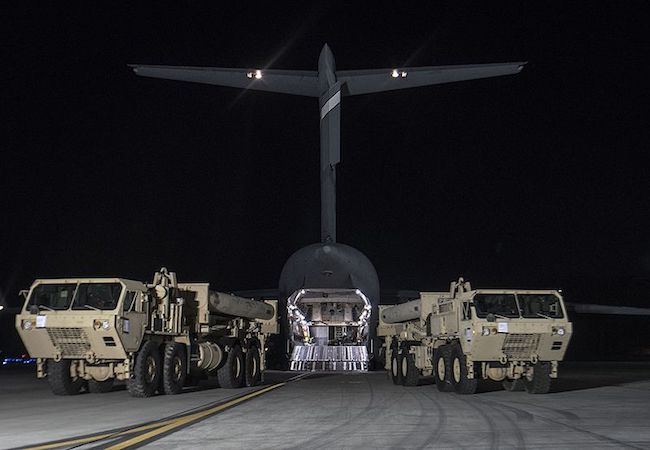
By Beenish Altaf
The Korean Peninsula is become a permanent quandary from a long time. Tensions have been continuing to by the repeated new projectile launches from North Korea. The launch of North Korean ballistic missile toward the sea off its eastern coast appeared in a blazing time of Peninsula’s tensions. The shot believed to be a modified version of the North’s intermediate-range ballistic missile, Musudan took off from Banghyon, a town near North Korea’s northwestern border with China that flew 310 miles before falling in the sea. Sarcastically narrating, was it really an attempt just to jolt the new American President? North Korea has since warned that it could test-launch an ICBM “anytime and anywhere,” in its first challenge to the new American president. Nevertheless, the United States Strategic Command issued a statement identifying the missile as a medium- or intermediate-range system that “did not pose a threat to North America.”
The flying-up apprehensions around the globe is that why North Korea speeded up its nuclear detonations? The answer to the question can be wrapped up in the findings primed by John Hemmings who is a Research Fellow at the Center for Strategic and International Studies, that “North Korea in order to gain its importance wants; regime survival, acceptance as a nuclear power by the US, a peace treaty between the US and North Korea, trade and economic growth on their terms, and Korean unification under Pyongyang’s benign rule.”
American fears
The jeopardy has been elevated with the presence of American submarine and imminent arrival of its naval strike group warships. There are also evidences by the US military, claiming the presence of its controversial Thaad missile defence system, which is said to be now operational in South Korea.
Ironically, the usability of this missile defence system was not expected before the end of 2017. Nevertheless, the system is installed and is believed to intercept North Korean missiles although full operational capability is still some months away. But as per a US official, the system only has initial intercept capability that will be strengthened later this year as more parts of the system arrive.
Well, North Korea is continually building up its nuclear and missile program that is causing apprehensions worldwide. It was the latest missile test triggered the fear of nuclear terror among the US and other relevant states. It triggered a flurry of phone calls among the worried leaders of the US, South Korea and Japan.
In response of the recent US military exercises, North Korea reacted quite indignantly, blaming the US of risking a nuclear war. Also, the US ships were sent away from Singapore and towards Australia to conduct drills with the Australian navy the US navy which was planned earlier the aircraft carrier would sail north from waters off Singapore as a “prudent measure” to deter North Korea.
As North Korea is aspirant of its sixth nuclear weapons test, the US as a consequent, warned the North Korea in very open words; all options are on the table which includes military strikes on North Korea to curb its nuclear aspirations. Despite of the US military movements and its outrageous war intimidation the North Korean foreign Minister Han Song-ryol stated:
“Now that we possess mighty nuclear power to protect ourselves from US nuclear threat, we will respond without the slightest hesitation to full-out war with full-out war and to nuclear war with our style of nuclear strike, and we will emerge victor in the final battle with the United States.”
Specifications and Functioning of Thaad
- Shoots down short and medium-range ballistic missiles in the terminal phase of their flight
- Uses hit-to-kill technology – where kinetic energy destroys the incoming warhead
- Has a range of 200km and can reach an altitude of 150km
- The Thaad radar system detects the enemy’s launch, which is relayed to command and control
- Thaad command and control instructs the launch of an interceptor missile
- The interceptor missile is fired at the enemy projectile
- The enemy projectile is destroyed in the terminal phase of flight
- The launcher trucks can hold up to eight interceptor missiles.
UN Sanctions
The test has ignited global resentment with the UN Security Council agreeing to begin drawing up new sanctions against the North and several Western capitals threatening the country of its dire consequences. Nonetheless, the United States, Japan and South Korea have requested urgent diplomatic talks Monday at the United Nations, which prohibits North Korea from engaging in any ballistic missile activities. But it’s unlikely that the meeting will lead to any serious punishment for North Korea, which is already under a slew of U.N. and other international sanctions. At the same time, nuclear missile program of DPRK has become reality as despite all the sanctions and the warnings they have been developing their nuclear program. Ironically, nothing has work so far, either the UN sanctions or unilateral steps taken by the US, Japan or South Korea. Even the entire focus of the US has been on tightening sanctions against the impoverished country, which is already under several sets of UN sanctions.
Challenge to Non-proliferation regime
Sarcastically, the test also raised attention-grabbing queries on the proliferation front. Alarmingly, North Korean nuclear advancements give quite clear message to the international non-proliferation regime and perhaps undermine the disarmament efforts globally. It is taken as a step further towards miniaturization of its nuclear warheads. Whatsoever, it not only defies the nuclear abolitionists’ demands, but also increases the probability of nuclear weapons horizontal proliferation in the region. Consequently, threatens to undermine an already fragile security situation in the region too. Isolating North Korea here has proved to be counter-productive. However, the ideal solution would be to resolve the issues with a balanced approach having sanctions and diplomatic engagements simultaneously.





